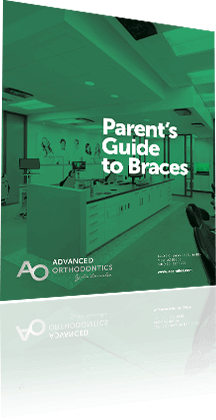Crooked smile? No problem. These days there are many options to help straighten your teeth and brighten your smile. Painful metal braces aren’t your only option anymore.
This is good news, especially for adults who would prefer not to wear standard metal braces. Cosmetic dental treatments have improved drastically over the last couple of years, both in quality and cost.
Your smile is such a prominent and important feature, and if you have a crooked one, we understand how that can make you feel unhappy. Crooked teeth can affect your bite and the uneven wearing down of the enamel on your teeth.
But don’t worry, there is a solution for you. Braces can do the trick, and there are many options to turn to, from discrete Invisalign aligners or lingual braces to metal braces. This post looks at what causes crooked teeth and how to fix crooked teeth.
What causes crooked teeth?
Teeth can develop unevenly due to several reasons. For example, genetics, jaw growth issues, obstructed airways, and oral health conditions can all play a role. Sometimes it just cannot be helped. Here we look at what causes crooked teeth in babies and adults.
Baby teeth have so much gum space to move in that they can often pop out crooked. Let’s take a look at the issues causing crooked baby teeth:
Crowding: If your toddler has crooked baby teeth, it doesn’t necessarily mean the permanent teeth will grow crooked too. Although if you notice your baby’s teeth are quite crowded together, there is a chance their permanent teeth may suffer this issue as well.
Trauma: If your baby suffers trauma to the mouth or has some of their baby teeth fall out sooner than they should, their permanent teeth may grow out slanted.
Genetics: Many issues like underbites, overbites, and crooked teeth are influenced by genetics, and we can’t avoid this. If problems arise like dental crowding or bite problems, it’s best to get your child assessed by a doctor, so they can monitor the progress and evaluate your child’s needs as they grow.
Thumb-sucking: Thumb-sucking and even pacifiers can impact your child’s teeth. These actions can push the front teeth forward or even create an overbite in some children. This becomes more severe if the child carries on this habit past the age of 6 or 7 since adult teeth start coming through at this age. If it does carry on, you may be faced with further issues down the line.
Now that we’ve looked at why baby teeth may come out crooked, let’s address why adult or permanent teeth become crooked:
Gum disease: If you suffer from gum problems or gum disease, you will find this impacting the straightness of your teeth. Gum disease can cause your teeth to become loose. When this happens, their alignment and even your bite can change and become crooked.
Aging: Did you know that your teeth tend to drift forward and, therefore, become more crowded as you age. Often people think this is because of their wisdom teeth pushing the rest of their teeth forward. But what’s actually happening is your jaw bone is losing density and changing shape. And this seems to encourage teeth to crowd at the front. That’s right. It’s not just wrinkles old folks have to worry about.
Injury: Severe injury to your face can cause your teeth to move around. It can also affect the position of your jaw and even damage your gums. All this, of course, can affect your teeth. Make sure you use gum guards during contact sports so this doesn’t happen.
Use your retainer: If you don’t want your teeth to shift back to being crooked after you’ve had your teeth aligned with braces, make sure to listen to your doctor. You will often need to wear a retainer after dental work to prevent a relapse or your teeth moving back to their original crooked position.
Jaw size: Due to evolution, our jaws are becoming smaller. We don’t have to chew as much as our ancestors did. With a smaller jaw size comes crowded, crooked, and misaligned teeth.
Dental care: It’s vital to have your teeth checked by a dentist every year. This way, you won’t miss any issues such as gum disease and cavities but will get treated in time, lessening the chance for crooked teeth to creep in unnoticed.
How to fix crooked teeth?
So you’ve made the decision, you’re going to fix your teeth. Now what? What is the best treatment option for you? A trip to the orthodontist will help you figure this out, but let’s look at a couple of the options here.
Metal braces
If your teeth and gums are strong, metal braces are a good option for people of all ages. The treatment can take anywhere between two to three years, depending on your dental requirements. Metal braces are attached to your teeth with brackets, bands and flexible wire. These are a good option for complex dental issues.
With a history of being prominent and painful, many people don’t like the idea of turning to metal braces. But there have been many changes in how these are made, and you’ll find them smaller, with colorful bands, made with less metal and they are also less painful than a couple of years ago.
Ceramic braces
These are similar to traditional metal braces but are clear and ceramic, and their archwires are also clear or tooth-colored. These will cost you slightly more than metal braces, but the straightening process is the same. They are a good option for those who need braces’ strength but don’t want to have them seen.
Invisible braces
Invisible braces, like Invisalign, are almost entirely invisible. These clear plastic aligners are made to fit your mouth and fit over each tooth. They look a bit like a mouthguard.
Usually, they are removed and replaced every few weeks, depending on your dental needs. The series of plastic aligners will gradually move your teeth to the correct place. Although they’re great for adjusting crooked teeth, they are not a solution for severe cases of alignment correction.
Lingual braces
Also not recommended for more severe cases of crooked teeth, lingual braces cover the side of your teeth that face your tongue. This way, they’re also invisible. They are much more expensive than the other braces options and difficult to clean.
Dental Veneers
Can you get veneers with crooked teeth? The answer is yes. If you suffer from a minor issue or small gaps between your teeth, veneers may be a good option. These are thin porcelain covers that are placed on top of your teeth. They are shaped to transform your teeth directly. Unfortunately, they are fastened to your teeth for a very long time, sometimes around 20 years.
How we can help
Advanced Orthodontics is proud to be a top 1% Invisalign provider. This means that the practice has treated more patients with Invisalign than 99% of providers. Our team is known for creating beautiful, healthy smiles all over the Valley.
Advanced Orthodontics uses the latest orthodontic technology to treat patients of all ages from Mesa, Gilbert, Chandler, Scottsdale, and Globe. See the difference in our clients’ smiles by visiting our Smile Gallery.
See how Invisalign can perfect your smile and find out how to fix crooked teeth during a complimentary consultation at Advanced Orthodontics. Contact the team at Advanced Orthodontics for a professional answer to whether Invisalign is the answer for you.



